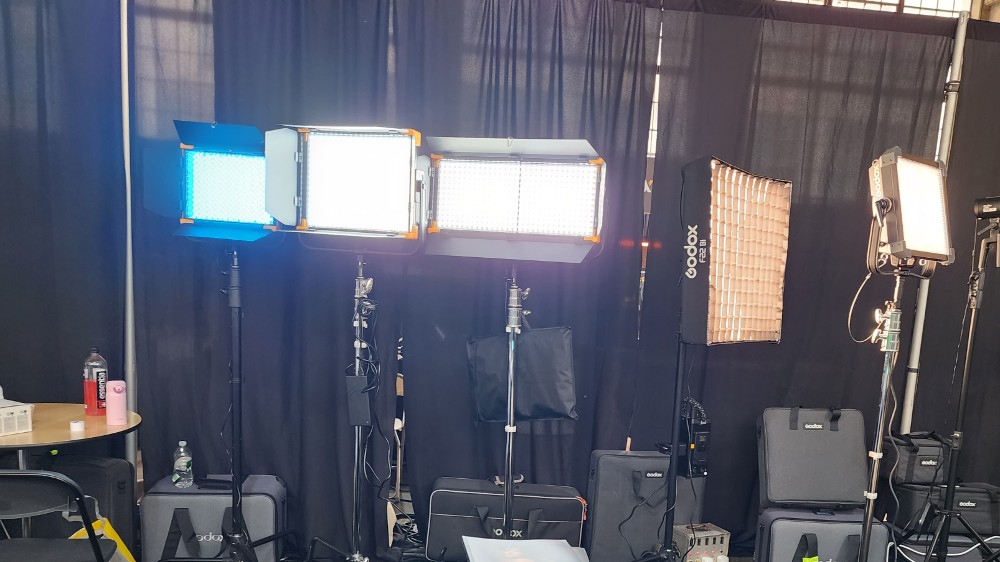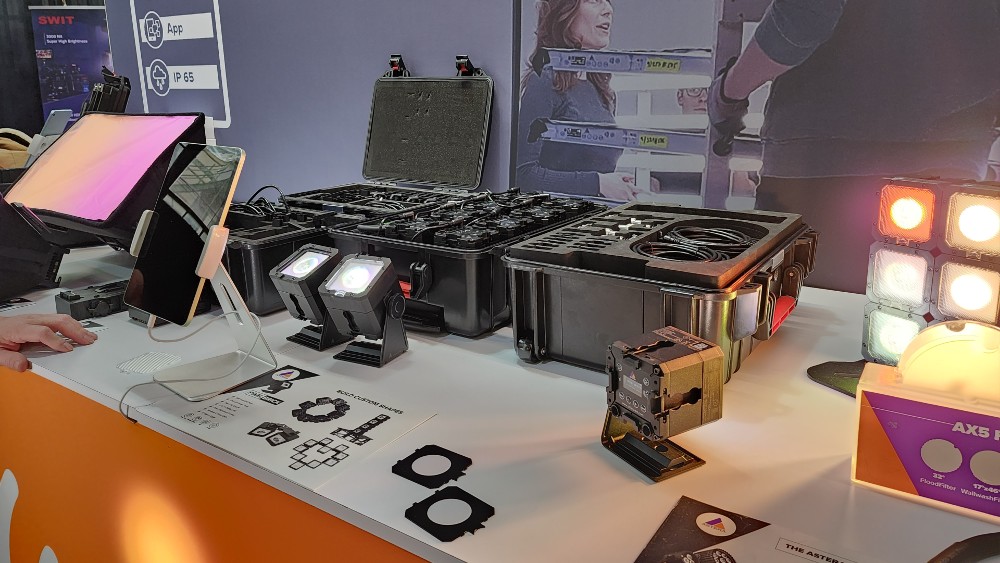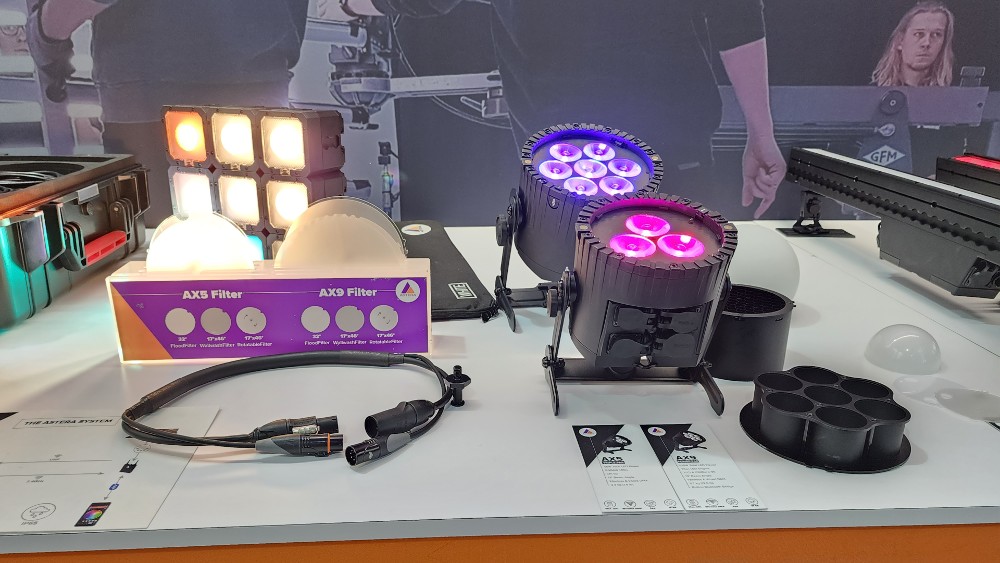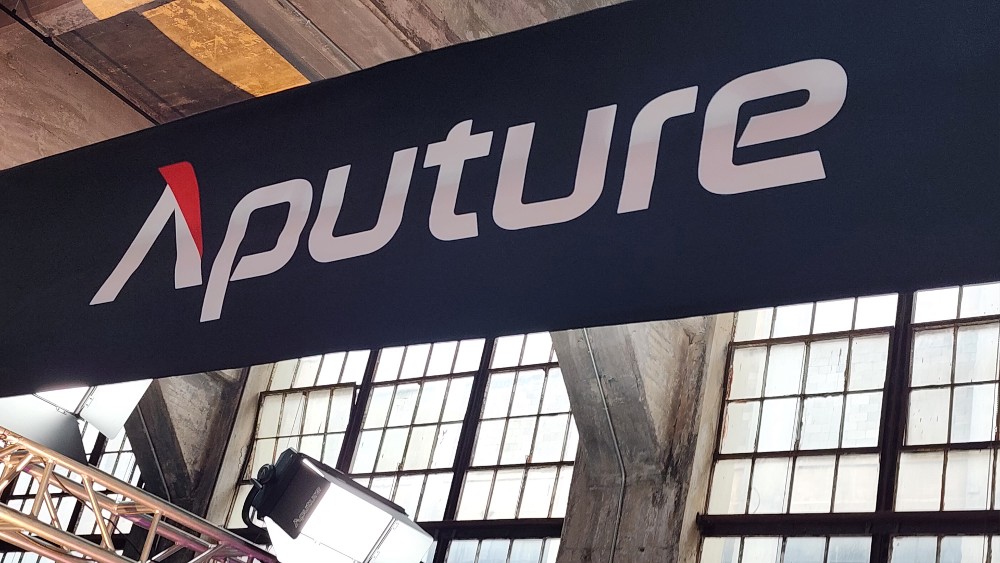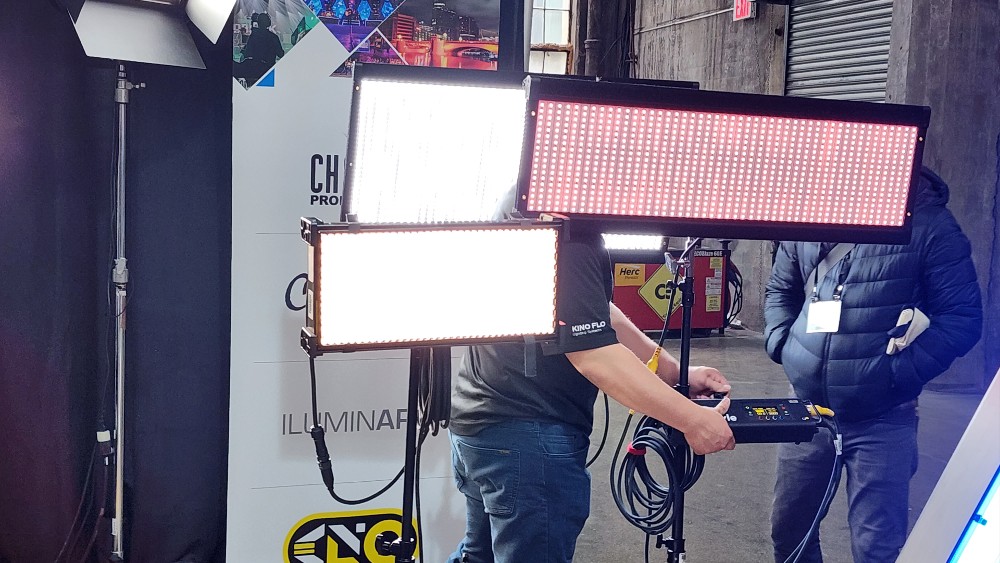For the first time in almost eight years, the Cine Gear Expo returned to New York City with all the best filmmaking gear and tech in tow after the planned 2020 expo was canceled amid the early days of the pandemic.
This year’s Cine Gear was held within Brooklyn’s Industry City, a massive eight-building complex that houses markets, merchants, and crafts experts with unique skills such as blacksmithing and swordsmithing. It was my second time at the Expo, having attended the 2021 confab in L.A., and this one was far easier for me to get to, though just as tricky to navigate as Manhattan’s Javits Center.
A big buzz term this year, as has been the case for the past few years, was “virtual production,” which has become the industry standard on many big-budget movies (such as last year’s The Batman) and television shows — most notably, Lucasfilm‘s The Mandalorian — as more facilities open up across the country and globe that can accommodate such an approach.
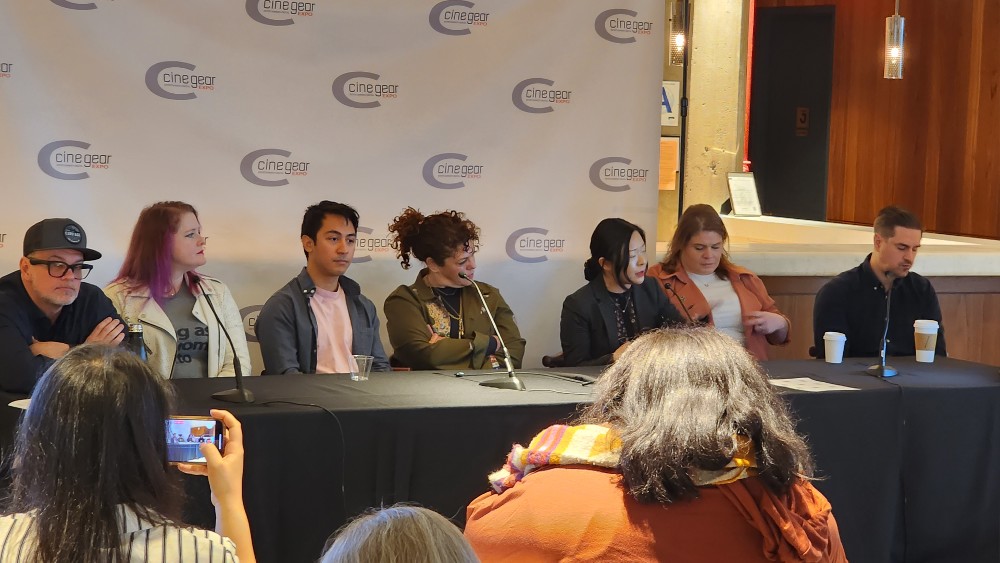
As proof, Cine Gear kicked off its Friday seminars with a “Virtual Production Center Panel,” which had co-founder Joseph White and Kimberly Dowd Petritsis representing Carstage, a Queens-based LED volume stage mainly focused on shooting vehicles. NYU’s Tisch School of the Arts is hard at work building the Martin Scorsese Virtual Production Center, which will be the very first academic virtual production studio on the East Coast. That was represented on the panel by NYU-Tisch’s Designer and Creative Designer Shelly Sabel, New Media Artist and NYU-Tisch Professor Snow Yunxue Fu, and Design Technologist David Poyner. That panel was moderated by Roseanne Limoncelli, Ph.D., and it was a great entry into the uses of virtual production and how NYU-Tisch is hoping to train future artists and technicians to help run the growing number of volume stages across the globe.
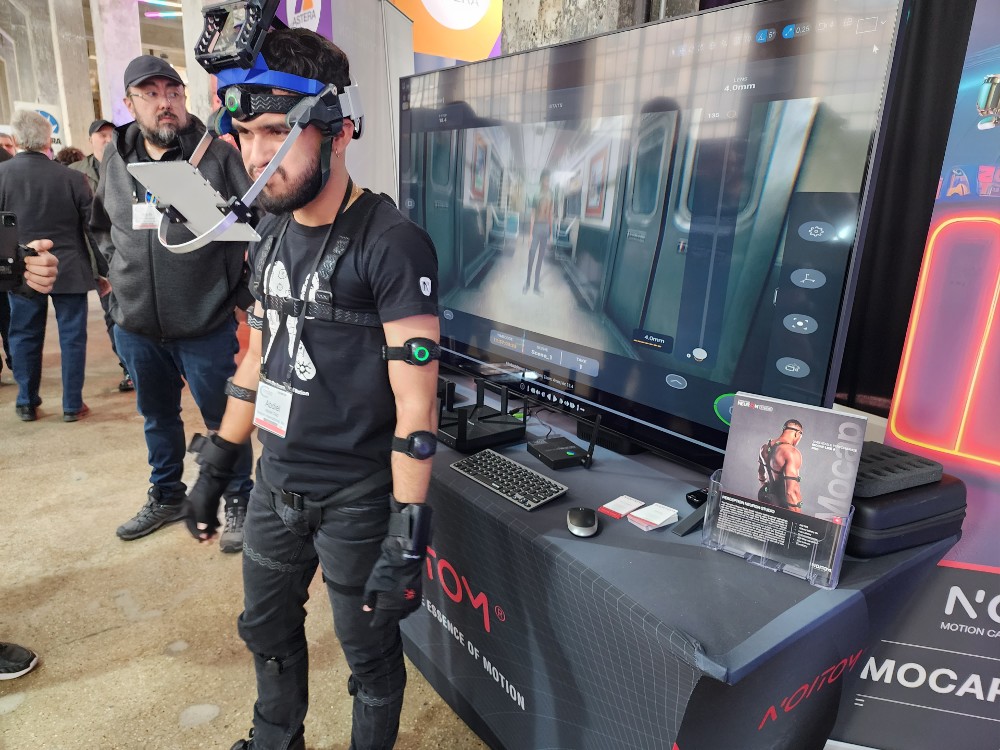
The abundance of virtual production tech companies showed off one of the main themes for this year’s Cine Gear – ingenuity and cost-effectiveness. Case in point for both of those things were motion capture products from Miami-based NOITOM VPS, which included a Turn-key Virtual Production Solution, and two motion capture systems — the more amateur-friendly Perception Neuron 3 and the professional Perception Neuron Studio for twice the price, but offering much bigger perks for production including twice the battery life. The Neuron 3 retails for roughly $3,999 while the Studio goes for $7,499, each one offering add-ons for finger tracking. NOITOM 3D Animator Abdiel Diaz was on hand to demonstrate how the Neuron worked with an impressive display for something set up on-site at an expo.
Also showing off the ingenuity for low-end and higher-end production tools, we spoke to Ivan Avanesov, CEO of Vosentech LLC, about their MicroFogger 4 Pro Edition, which gives you a small lightweight smoke machine for $230 each and allows you to chain them together and control them. Vosentech offers a variety of accessories to control the smoke for all sorts of situations.
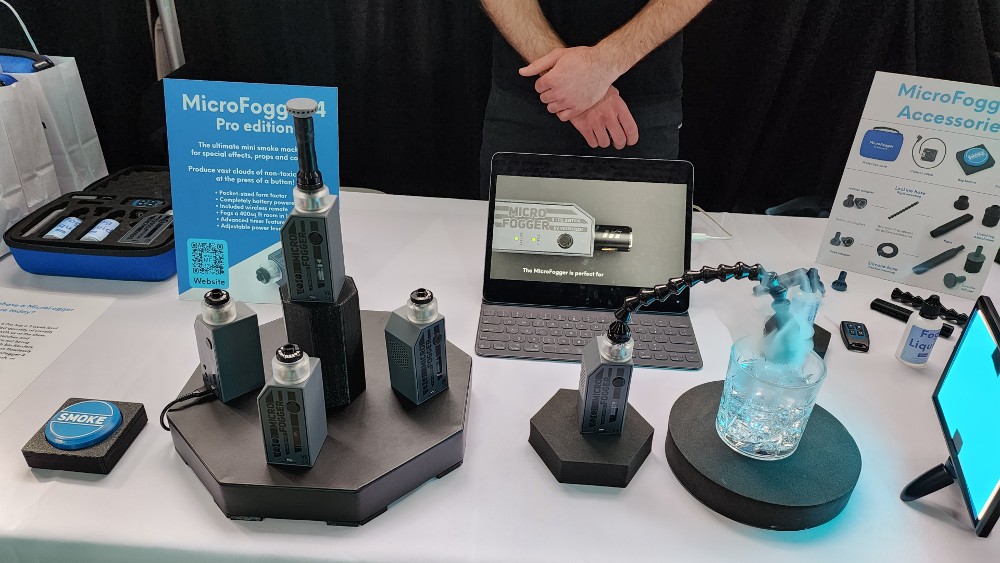
A few tables down, we spoke to Craig Singer of Inner Circle Distribution, who handles Astera and Exalux LED lights, and other brands, but we watched him demonstrate the Smoke Genie, which is a higher-end handheld smoke machine for fog and haze effects, which comes in a single-unit Smoke Genie starter kit ($595) and a Smoke Genie professional kit (for $750), as well as a package with multiple units and a remote for larger-scale effects. The benefit of something like Smoke Genie is that it comes with a lot of the accessories you might need.
With all of that lovely gear on display to get gear heads drooling, there were also quite a few companies on hand to provide financial help and equipment rentals for production, such as AbelCine, who provides both equipment sales and rentals, as well as production and tech services.
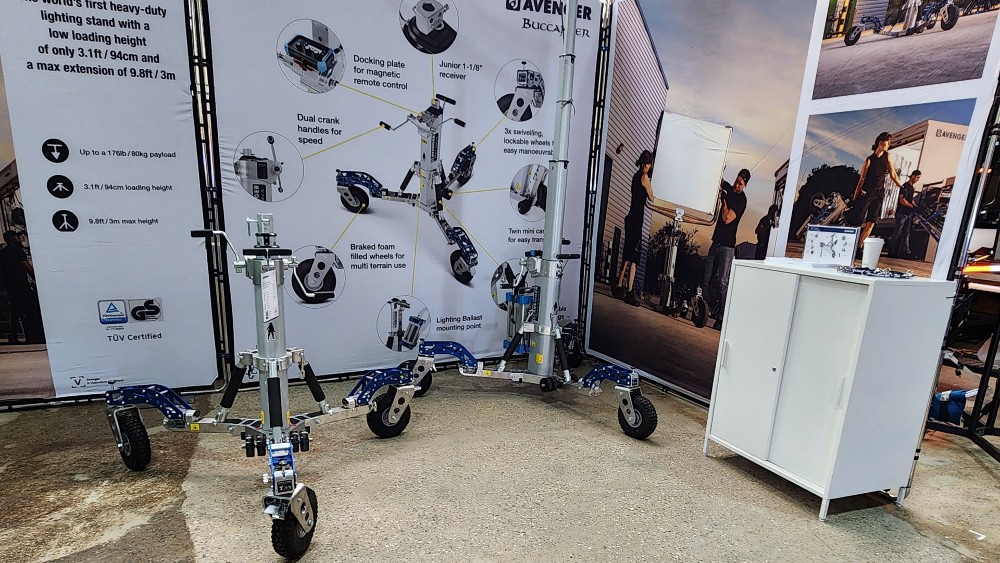
Another thing that impressed us was the Avenger Buccaneer, an all-purpose lighting support that holds a payload of 176.3 lbs with a 9.84-foot max height and a low-loading height of 3.1 feet to reduce having to overreach while mounting lights. It was a massive piece of grip equipment, but we were told it only weighed 165 pounds and folded down to a fairly compact and easily transportable unit.
Equally interesting was the booth for Nauticam, specializing in splash bags and rigs for underwater filming, repped and handled by rental company Air Sea Land Productions, who were on hand to talk about their productions. Right next to them was Nanlux, who was inviting visitors to the booth to drop a LEGO mini-fig into a fish tank of water to show how its Evoke 1200B can light up to 875,000 frames-per-second without flicker.
We also spoke briefly with John Fuller of Chimera Lighting, who showed off their newest light banks for film and video. Fuller boasted that Chimera’s bags and light banks tend to last longer than the actual lights that they house.
With that in mind, it was wise for Lux Lighting to be pushing their lighting repair services, which provide repairs for LEDs, HMIs, Dimmers, Consoles, and more, making it a bit of a full-service shop for those working in camera and grip.
Of course, our friends at Creative Solutions were on-hand to show off the newest products from Teradek and Small HD, including Teradek’s Bolt 6 Series, which is innovative in the way it uses twice as many operating frequencies, operating on the U-NII 5, also known as “6Ghz.” This is pretty huge, because anyone who has been on a set where there’s a lot of crosstalk between other signals in the area, knows the importance of having a distinct and discreet channel for transmitting video signals from wireless cameras. It was also offering a Bolt 6 Monitor Module to support the SmallHD Smart 7 Monitors, both of them backward compatible and able to pair up to six receivers, and compatible with the Bolt 4K ecosystem.
We spent quite some time chatting with City Theatrical, which, as the name implies, comes from the world of theater in New York and London to create lighting solutions that could also be used for production lighting. One thing we got to check out was the QolorFLEX, LED lighting tape that is fully flexible to bend into all sorts of shapes and places. Even more impressive was their new Multiverse Studio Wireless DMX/RDM, a modular system that includes the Multiverse Studio Receiver that’s also available in a number of Studio Kits with everything that’s needed to control a whole series of lighting remotely. City Theatrical’s products are another example of the ingenuity coming into film and television production from unexpected places.
Dan Gottesman of The Garage Rentals was nice enough to give us a demonstration of the MRMC motion control camera system, of which they are the East Coast rep for rentals of the systems, which they will bring to your production location, along with the necessary technicians and camera operators in order to program the most difficult of shots.
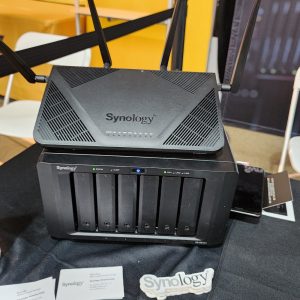
Xris Nil, the technical account manager at Synology was kind enough to talk to us about its storage and data management solutions, which you can check out at the link. It sounds like just the thing for all of the post-production and VFX houses that have transitioned into work-at-home for many of their crew.
In another example of the variety of the gear on display at Cine Gear, we spent some time speaking with Keith Guliner, President and CEO of Wits End Group, a New York-based rental company for production supplies and equipment, who saw an interesting niche to branch out into, buying Seaco Industries, a manufacturer and distributor of rope, twine, and industrial supplies. If you’re thinking that rope and twine aren’t too sexy, you obviously haven’t been on-set where those kinds of things are crucial for rigging, wire work, and other uses, but Seaco doesn’t just focus on film and television production, as Guliner told us, since they also make string and twine for culinary uses such as making sausage. (It was nice to hear that Guliner also subscribed to Below the Line‘s daily newsletter, too, as should everyone.)
IATSE was represented at Cinema Gear by two branches, Local 600 the International Cinematographers Guild, which made sense since much of Cine Gear was aimed at those who work with cameras IATSE Local 52, Motion Picture Mechanics was also on hand to make its existence known to Cine Gear attendees.
Another thing that caught my interest was The Cine Lens Manual, written by Jay Holben and Christopher Probst, ASC, which looks like an essential guide to lenses and opticals and how to use them. It’s a pricy book at $175, but it’s also quite hefty and thorough and probably required reading (owning) for any cinematographer or those at any level of camera.
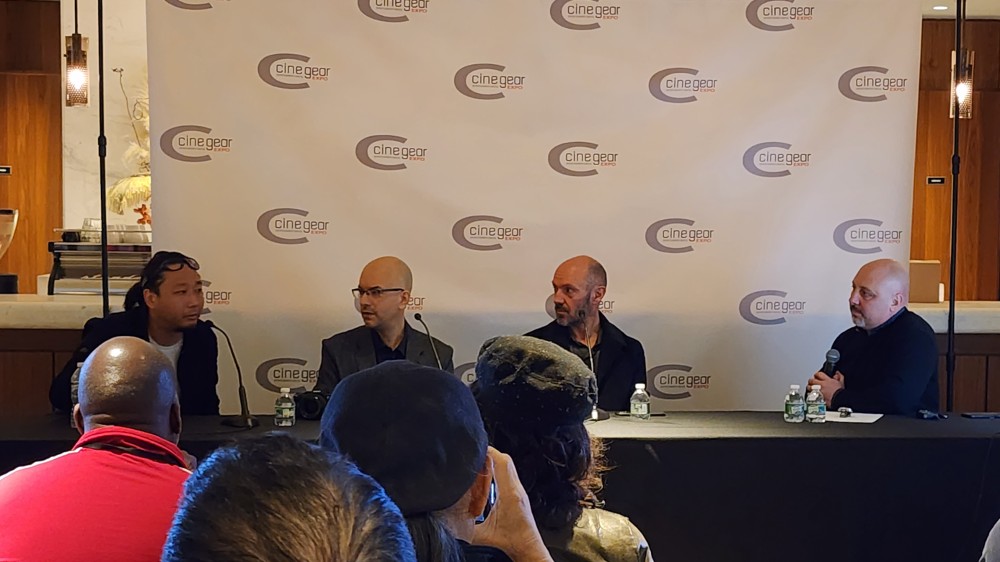
Saturday’s seminars focused heavily on cinematographers with a last-minute seminar slotted in place of the planned focus on the show East New York since Cinematographer Jendra Jernagin couldn’t make it. Instead, we got a panel with DP Gonzalo Amat from the hit Netflix show, Outer Banks; Bill Winters, who shoots the new Disney+ series, Rennervations; and Tinx Chan, who is the DP on Apple TV+’s The Problem with Jon Stewart. Each of them spoke about the specific challenges of shooting for their shows, finding the right lighting, and knowing how to shoot in very specific circumstances.
For Amat, it was the fact that his shows tend to shoot outdoors in the magic hour (from 4 p.m. to sundown), which limits the amount of time to get the shots for each show. Winters talked about filming for Netflix’s Twentysomethings, which offers the challenge of having to shoot a lot of dialogue scenes in nightclubs for the reality series. Chan spoke on shooting the writers’ room segments for Jon Stewart‘s show, and he praised Watlow‘s EZ-Zone Controller (designed by legendary DP Ed Lachman), which he said is an absolute must for any cinematographer.
It was a generally informative seminar, as was the one that followed called “Cinematographers Creative process – Deconstructing scenes,” which had three prominent cinematographers talking about specific scenes in movies they shot, two of them for films they directed. On hand was Frank DeMarco, ASC, who focused on a scene from J.C. Chandor‘s 2013 film, All is Lost; Frank Prinzi, ASC (who shot the brilliant Living In Oblivion – one of Peter Dinklage‘s earliest films) who focused on a short film he directed with his daughters as vampires called It’s A Mess; and then Reed Moreno, ASC, was there (replacing the absent Fred Murphy), and she focused on her second feature film, I Think We’re Alone Now, also starring Dinklage, oddly. Each of them talked about specific scenes and how and where they were shot, the decisions they made in terms of lighting, and their camera decisions.
If there was one grievance I had with this year’s Cine Gear, it’s the fact that the seminars were held in Building 3 while the main expo was in Building 7 and 8, and those buildings each take up a city block, so you’d have to walk four or five blocks between the venues. Also, I kept hearing about there being other vendors rooms in some of the buildings in between, but I was never able to find the “elevator” that would take me up to those rooms and eventually gave up.
Overall, this year’s Cine Gear Expo was generally a success with the New York-based production professionals thrilled to have it back in their neighborhood.
(All photos above and below courtesy of Edward Douglas.)
